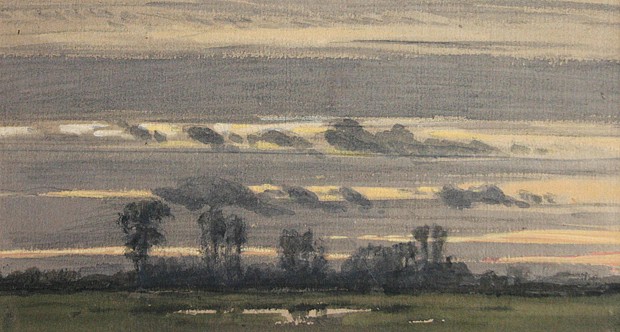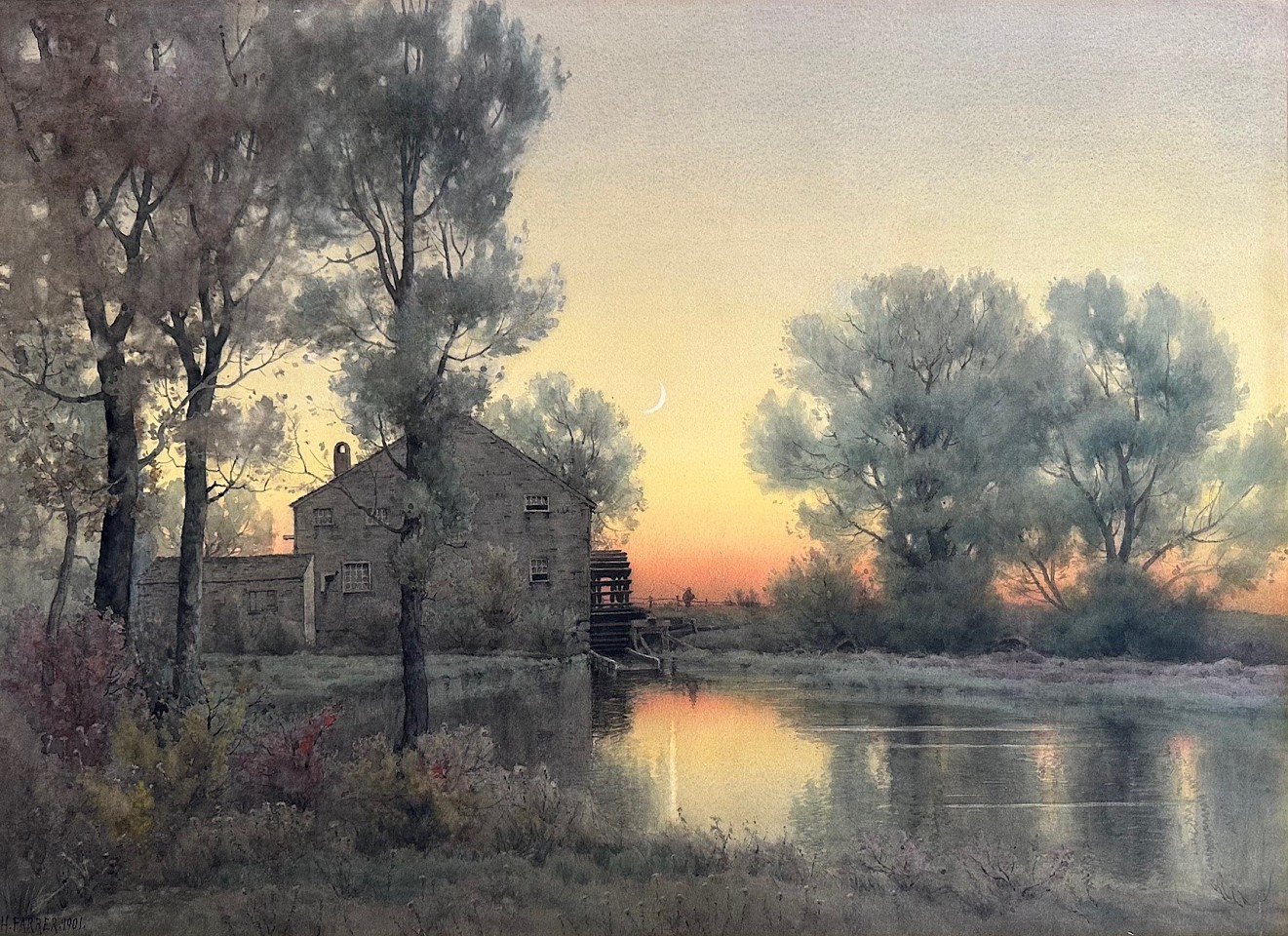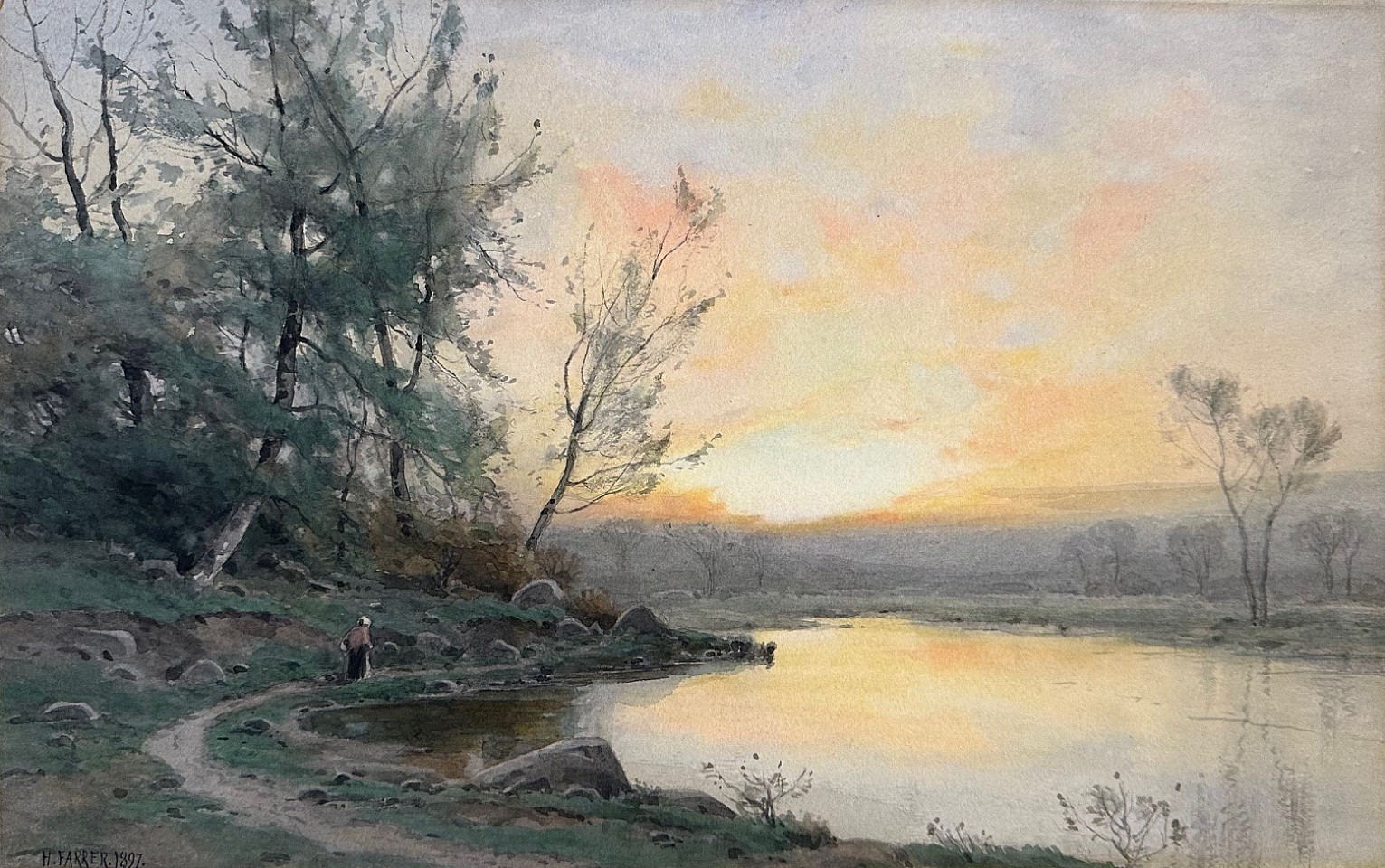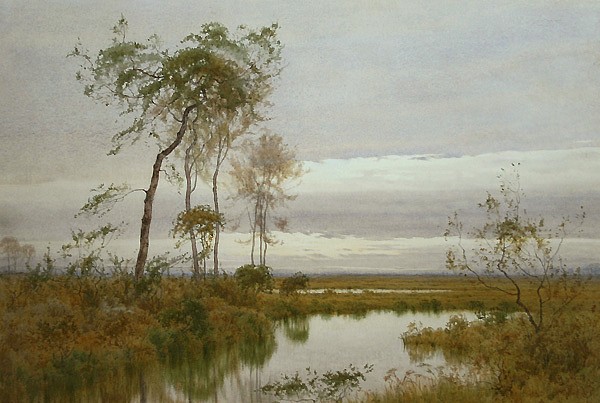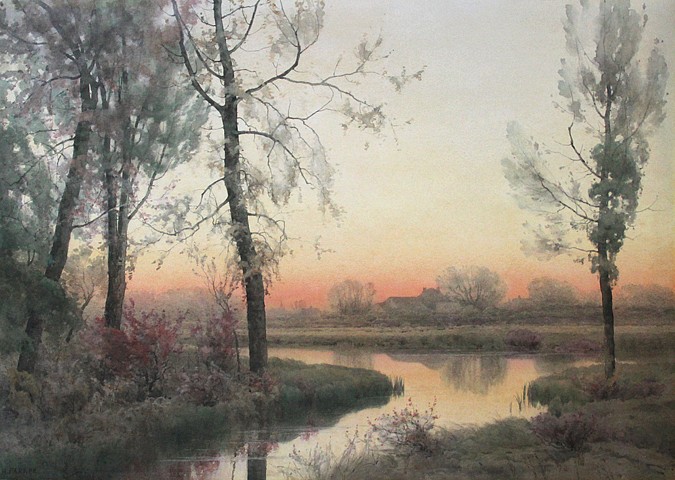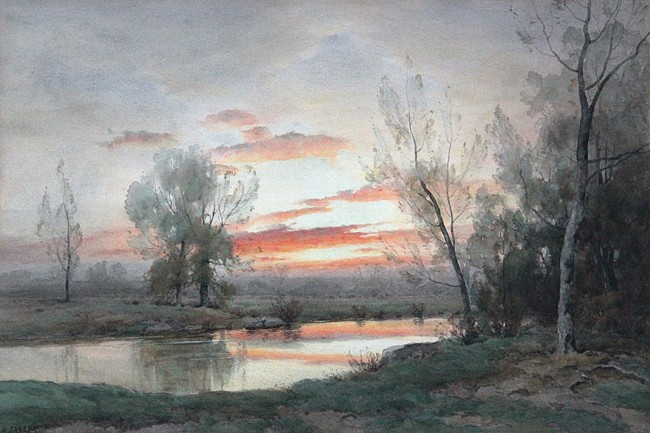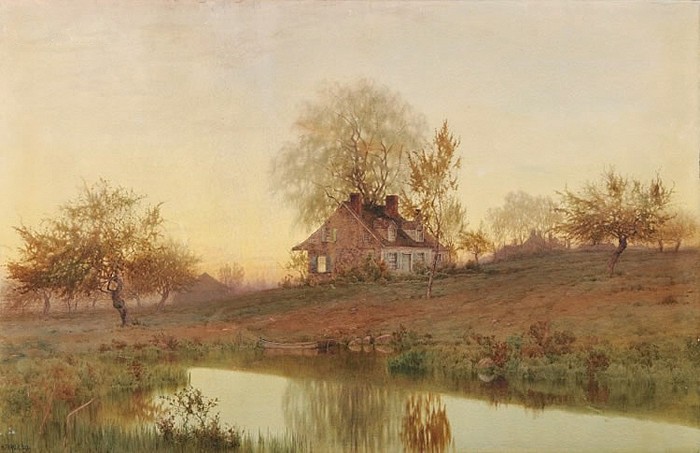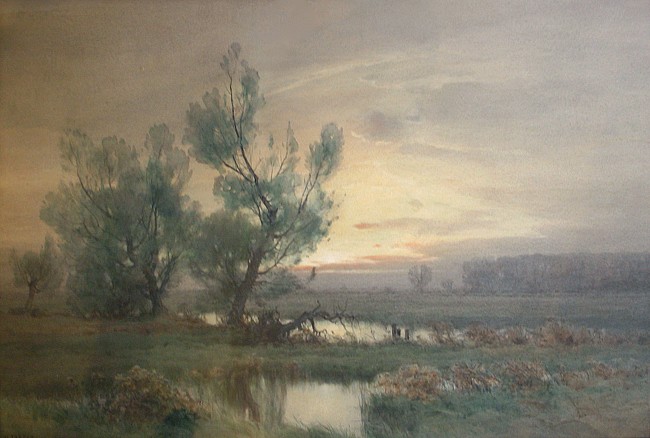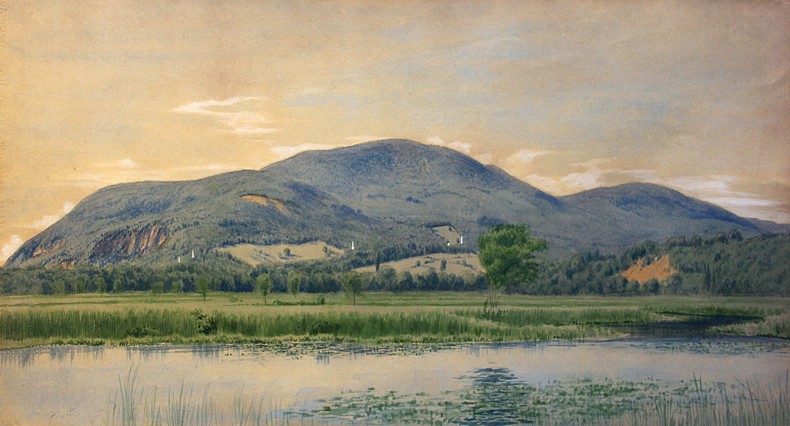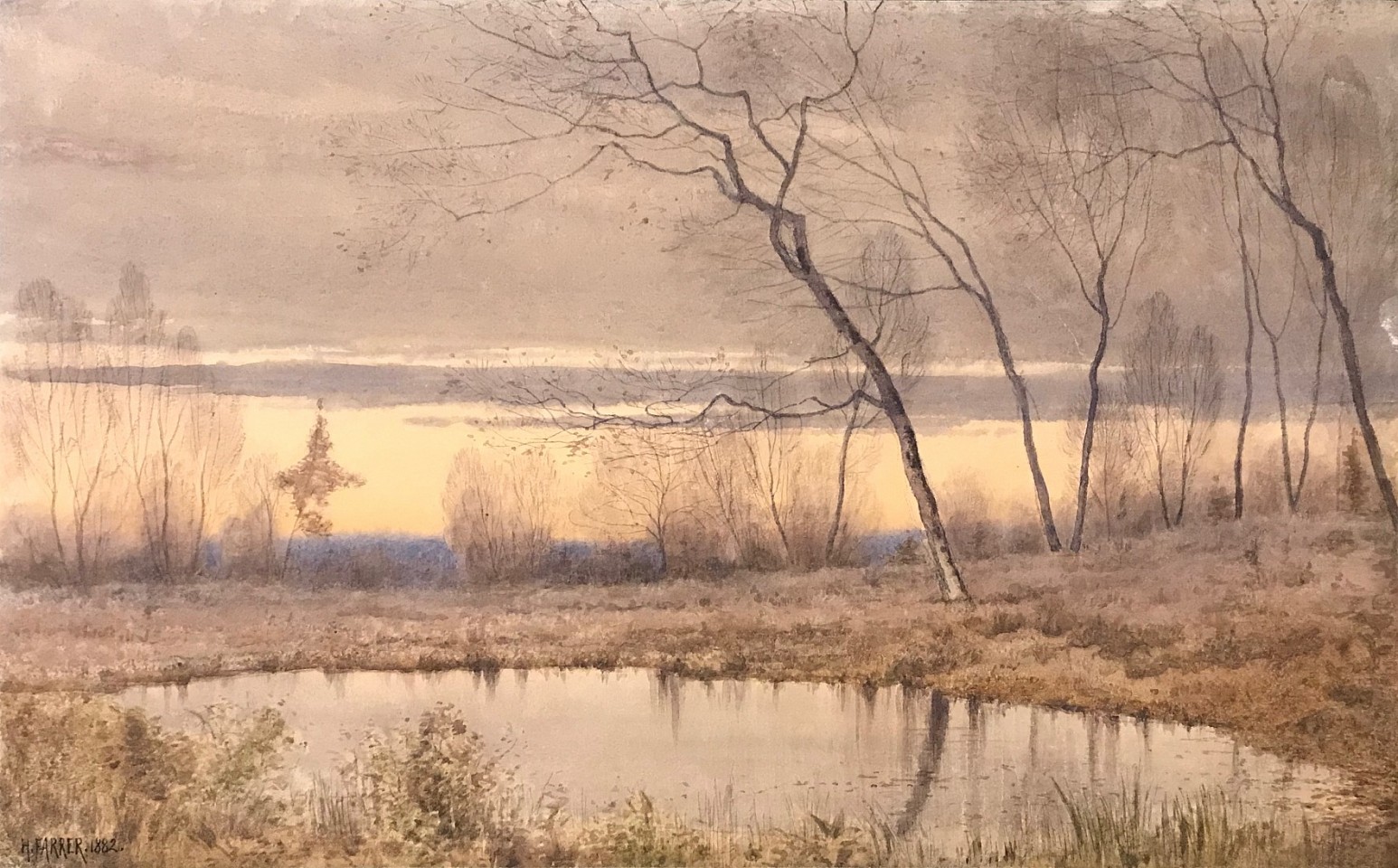Henry Farrer
|
Henry Farrer (1844 - 1903) Marshland, 1892 signed and dated lower left watercolor on paper 17 ½” x 25”
Henry Farrer, who came to America from England in 1862, is recognized as playing an important role in the development of watercolor during the second half of the nineteenth century. He contributed annually to the exhibitions of the American Water Color Society over thirty-seven consecutive years, beginning with the Society’s inaugural event in 1867. Later in his career, critics for the New York Times consistently made example of Farrer’s work “as a barometer of the ups and downs of the American watercolor movement” (1).
Farrer was a self-taught artist, in contrast to his older brother Thomas C. Farrer (1838-1891), an American Pre-Raphaelite who studied with John Ruskin (1819-1900) in London and was a founding member of the Association for the Advancement of Truth. Henry Farrer’s work, such as Marshland from 1892, shows the influence of the Pre-Raphaelites in its brilliant use of light, fidelity to nature, and emotional evocation. By 1875 Farrer took a departure from the hyper-clarity and bright hues of his earlier watercolors and began to utilize a more tonal palette. Marshland showcases a narrow range of muted colors in the more freely painted style for which he became known. The quiet marsh with its winding stream seen in the subdued sunlight exudes a compelling mood of melancholic, almost eerie, tranquility.
Farrer exhibited at the National Academy of Design, the Brooklyn Art Association, the 1876 Philadelphia Centennial Exhibition, and the 1878 Paris Exposition Universelle. He was a member of the Artists Fund Society, the Royal Society of Painters-Etchers in London, and a founder of the New York Etching Club. He lived and worked in Brooklyn until his death in 1903. |
|
|
|
Provenance: From the trade to the gallery. |
|
|
|
Bibliography:
1. Stephanie Wiles, “A Survey of Watercolors by Henry Farrer” in Master Drawings, vol. 40, no. 4, Nineteenth Century British and American Drawings (Winter, 2002), 317.
|
|
Henry Farrer (1844 - 1903) Last Light on the Marshes, circa 1895 signed, H.Farrer, lower left watercolor on paper 16 ½” x 24 ½”
Henry Farrer, who came to America from England in 1862, is recognized as playing an important role in the development of watercolor during the second half of the nineteenth century. He contributed annually to the exhibitions of the American Water Color Society over thirty-seven consecutive years, beginning with the Society’s inaugural event in 1867. Later in his career, critics for the New York Times consistently made example of Farrer’s work “as a barometer of the ups and downs of the American watercolor movement” (1).
Farrer was a self-taught artist, in contrast to his older brother Thomas C. Farrer (1838-1891), an American Pre-Raphaelite who studied with John Ruskin (1819-1900) in London and was a founding member of the Association for the Advancement of Truth. Henry Farrer’s work, such as Last Light on the Marshes, shows the influence of the Pre-Raphaelites in its brilliant use of light, fidelity to nature, and emotional evocation. By 1875 Farrer took a departure from the hyper-clarity and bright hues of his earlier watercolors and began to utilize a more tonal palette. Last Light on the Marshes showcases a narrow range of muted colors in the more freely painted style for which he became known. The quiet marsh with its winding stream seen in the subdued light of dusk exudes a compelling mood of melancholic tranquility.
Farrer exhibited at the National Academy of Design, the Brooklyn Art Association, the 1876 Philadelphia Centennial Exhibition, and the 1878 Paris Exposition Universelle. He was a member of the Artists Fund Society, the Royal Society of Painters-Etchers in London, and a founder of the New York Etching Club. He lived and worked in Brooklyn until his death in 1903. |
|
|
|
Provenance: From a private Arizona collection to the gallery. |
|
|
|
Bibliography:
1. Stephanie Wiles, “A Survey of Watercolors by Henry Farrer” in Master Drawings, vol. 40, no. 4, Nineteenth Century British and American Drawings (Winter, 2002), 317.
|











